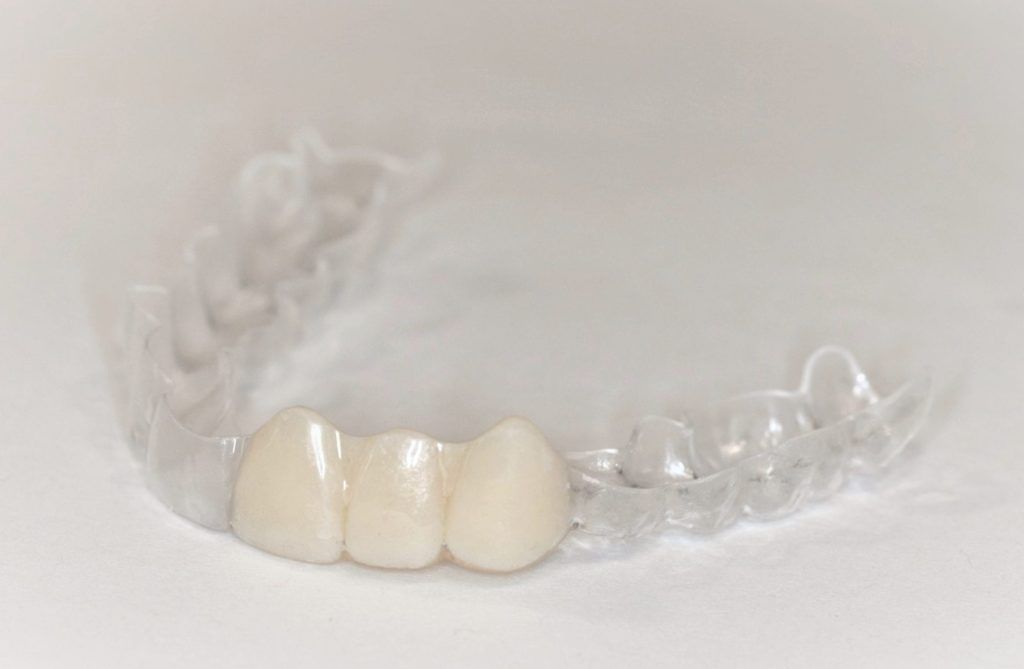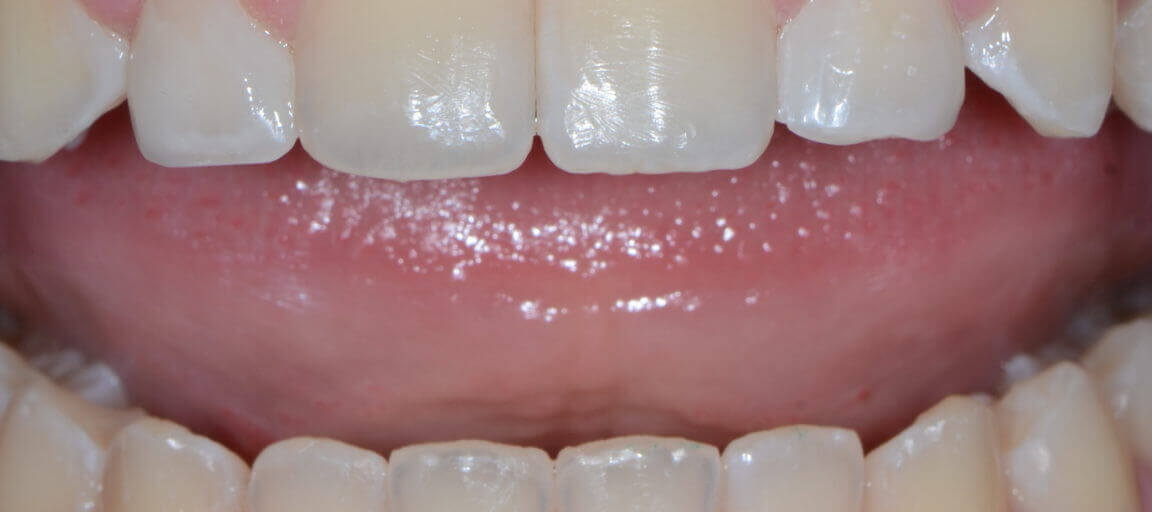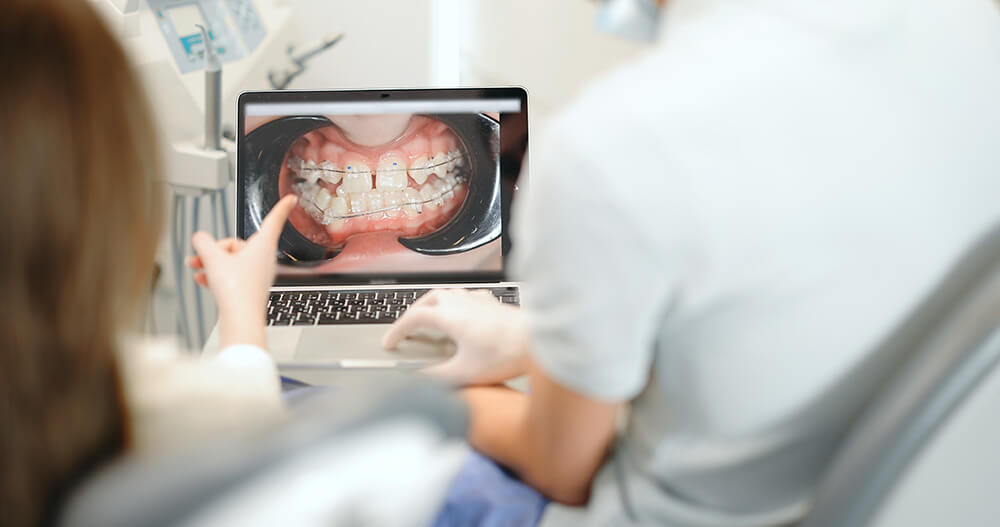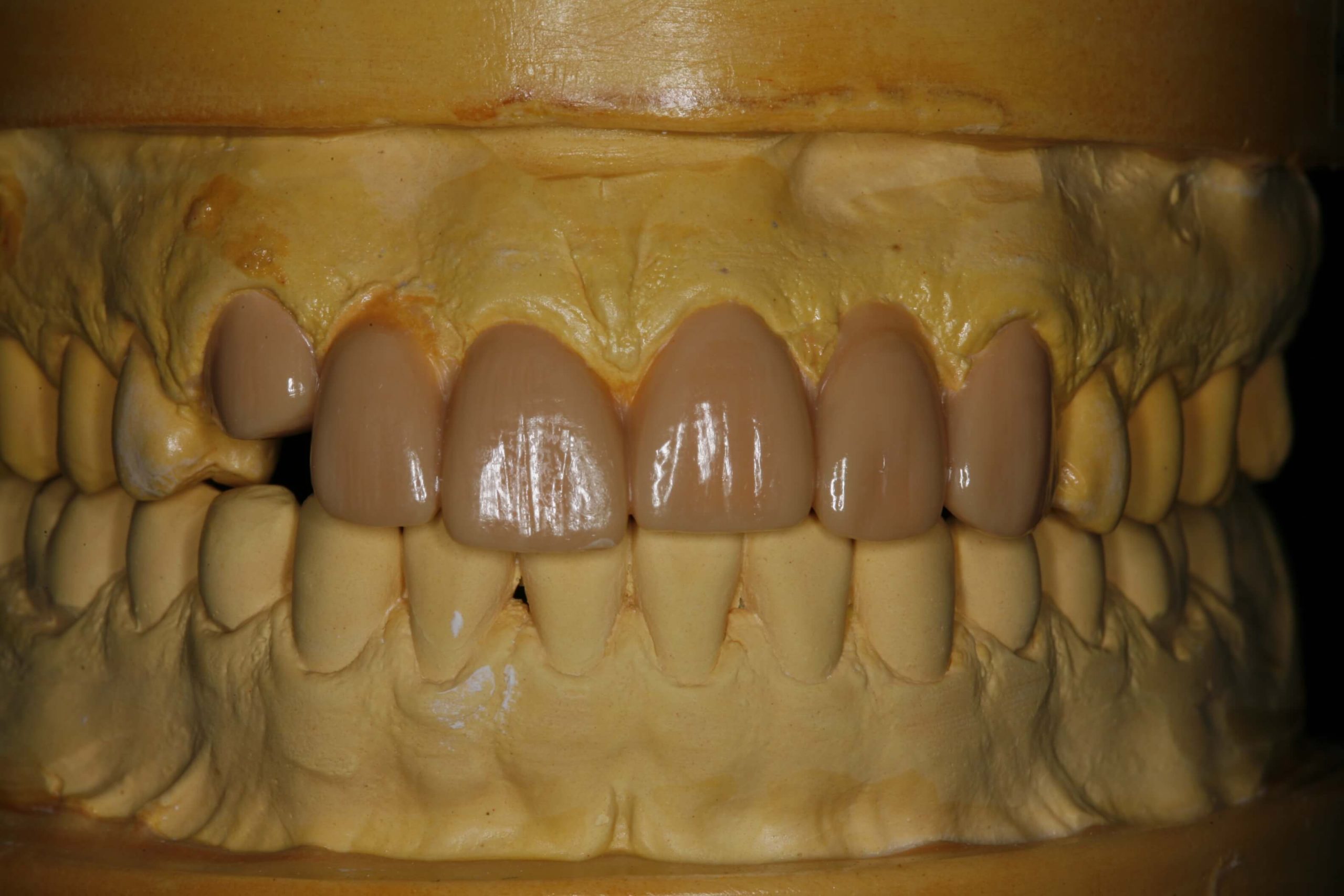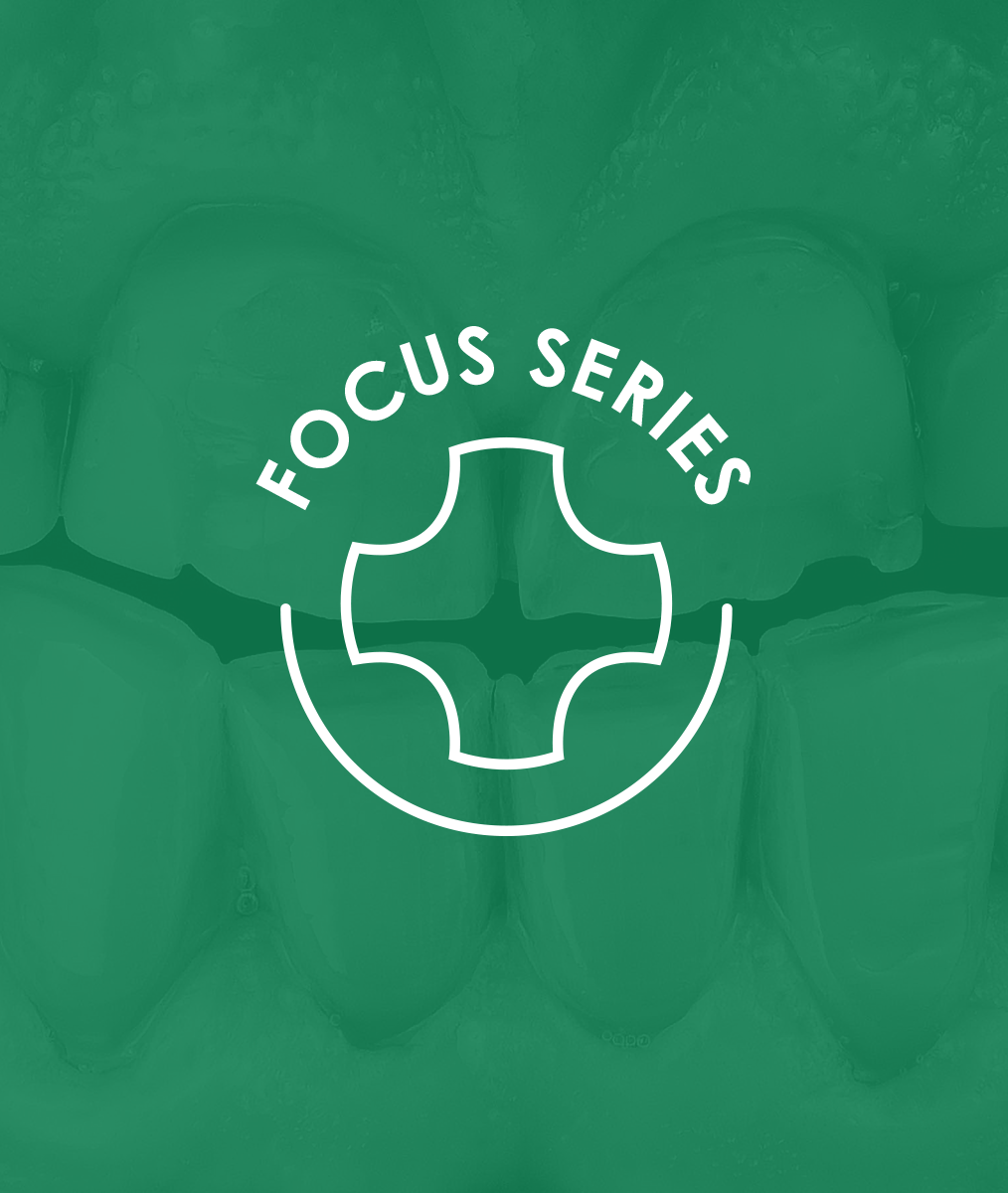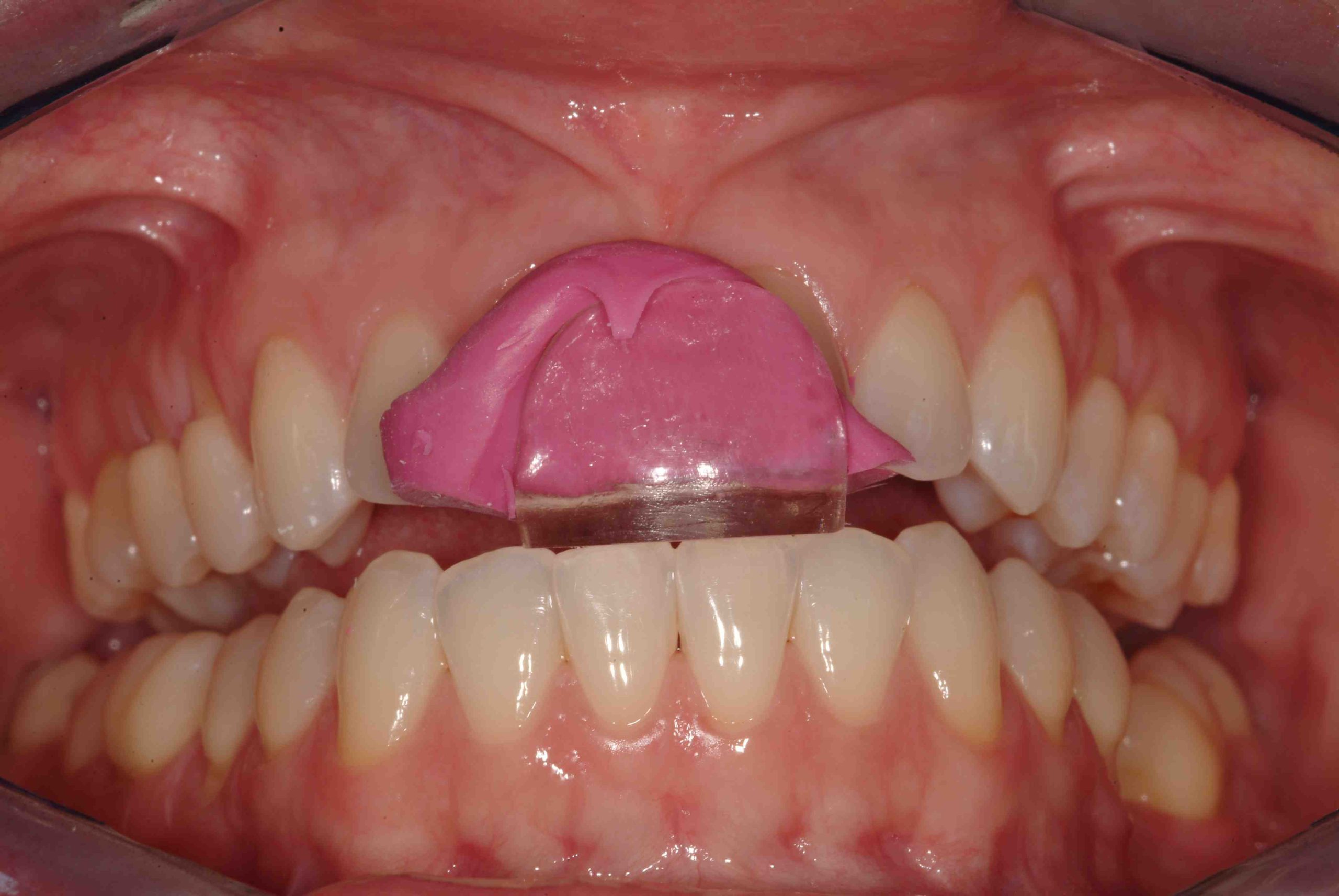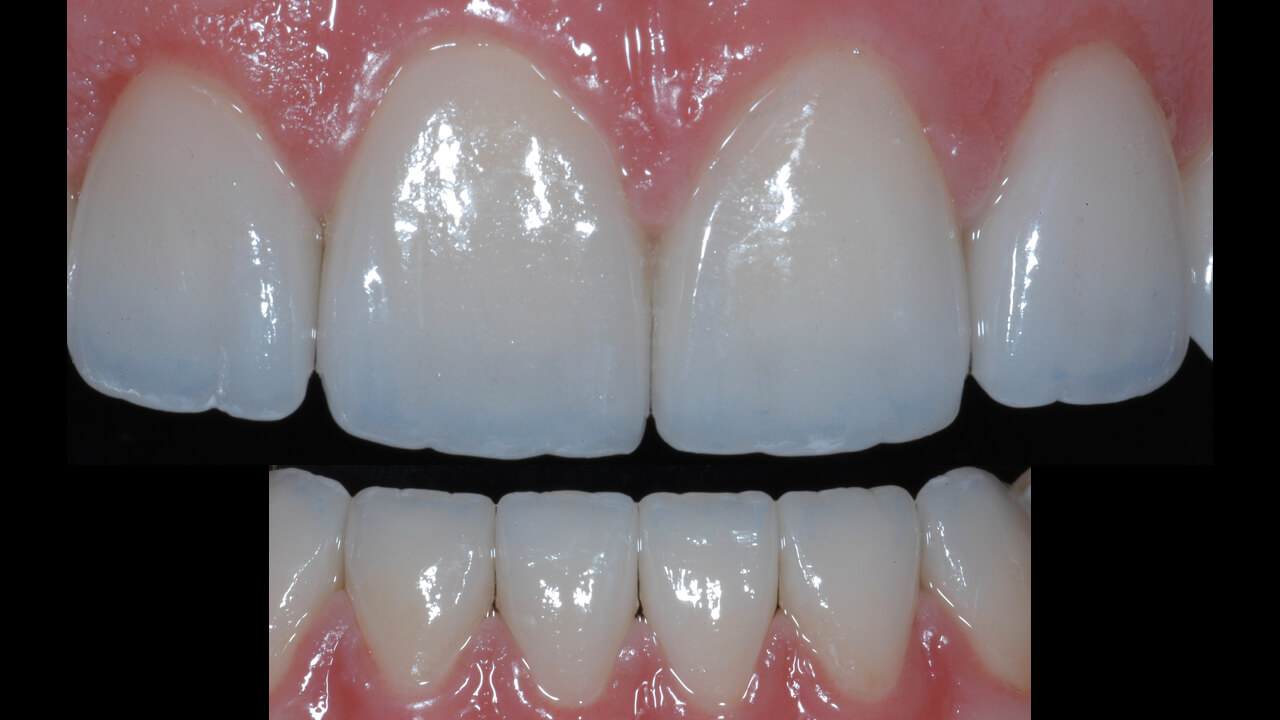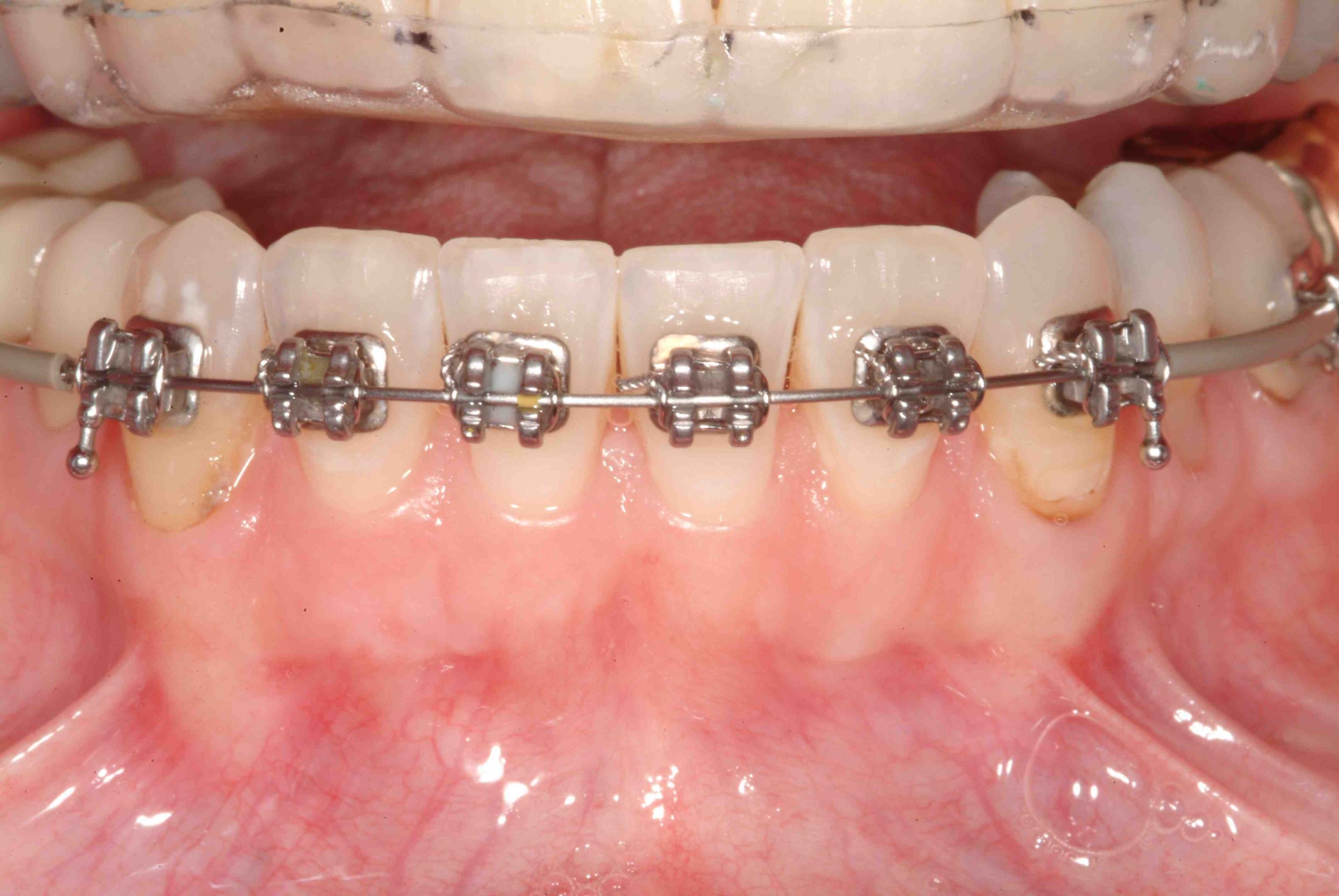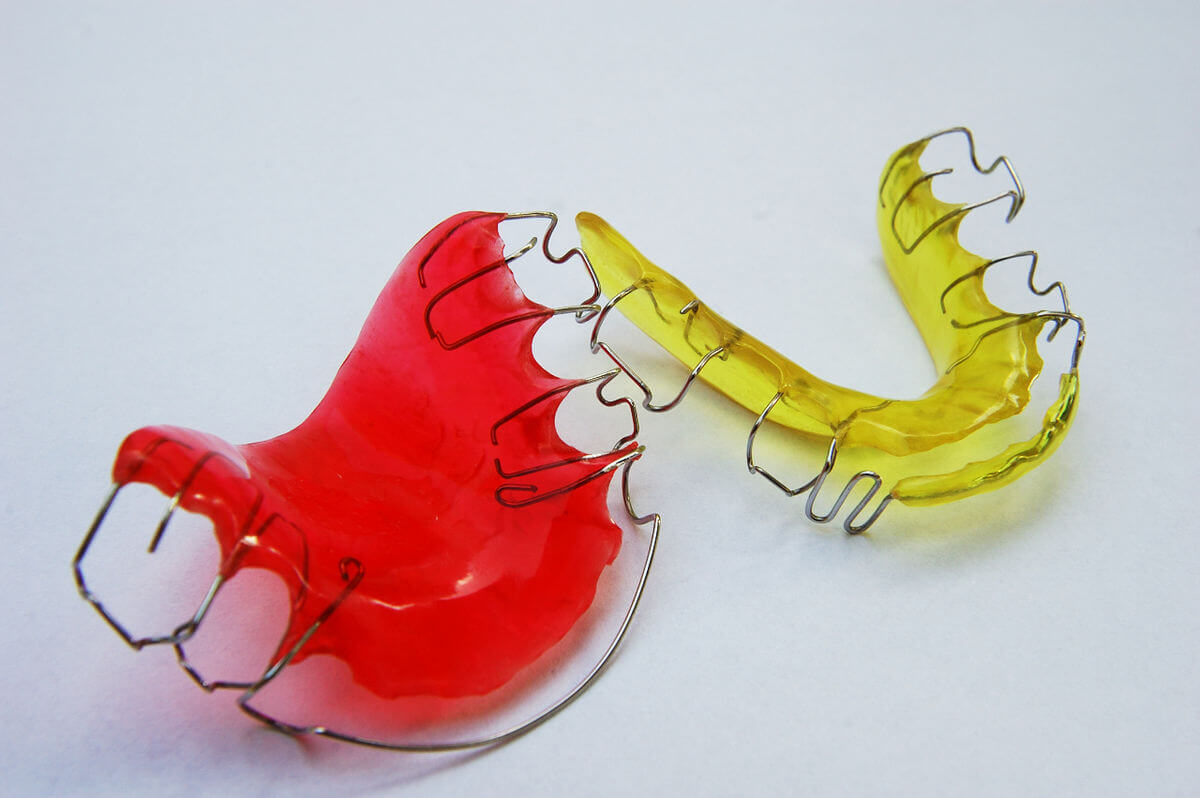Dental Care While Wearing an Essix Retainer
By Lee Ann Brady, DMD
One of the most common ways that we temporize a patient who is having maxillary anterior implant dentistry is with an Essix retainer. Some patients will wear it 24 hours a day and others for less. Hopefully they are taking it out to rinse, brush, and floss, but the reality is they are wearing a removable device that covers all of the tooth surfaces for a lot of hours every day, and we’re increasing their risk of caries, decalcification, and gingivitis.
In addition to discussing the normal oral hygiene to be done at home, in our practice, we typically dispense a product like Clinpro 5000 from 3M or MI Paste from GC America. These are high calcium and fluoride products that provide fluoride treatments inside the Essex retainer.
- If a patient is sleeping in the Essix, the instructions are to brush and floss the teeth and then use a toothbrush to spread a little bit of Clinpro or MI Paste on the inside of the retainer before going to sleep.
- If they are not wearing the Essix during sleep, the instructions are the same but to wear the Essix for up to an hour every evening before removing it to go to sleep.
If the patient’s caries risk is high, I prefer using 10% carbamide peroxide gel instead of Clinpro or MI Paste. This is the active ingredient we us in perio trays to help prevent gingivitis. This is also the means by which patients can whiten their teeth while wearing an Essix retainer.
To prevent damage to the Essix, instruct patients to rinse it with cold water and, when not wearing it, to store it in the provided container.
Related Course
Mastering Dental Photography: From Start to Finish
DATE: October 29 2026 @ 8:00 am - October 31 2026 @ 12:00 pmLocation: The Pankey Institute
CE HOURS: 19
Regular Tuition: $ 2995
Single Occupancy with Ensuite Private Bath (per night): $ 355
Dental photography is an indispensable tool for a high level practice. We will review camera set-up and what settings to use for each photo. All photos from diagnostic series, portraits,…
Learn More>
